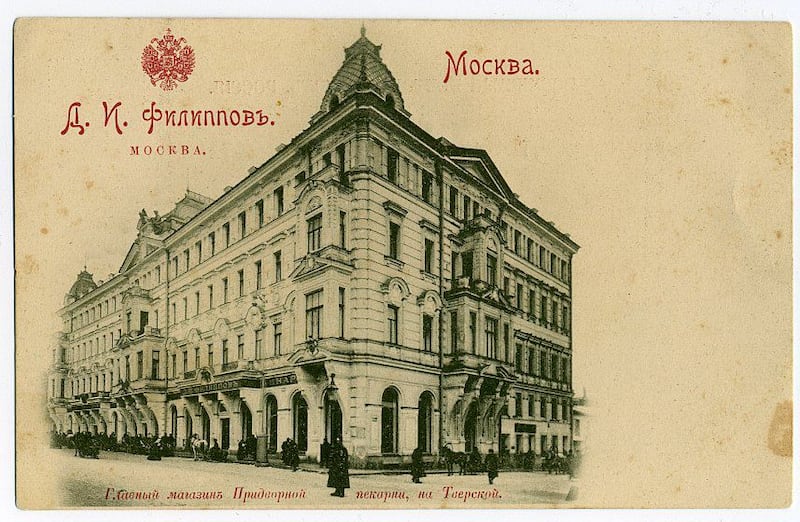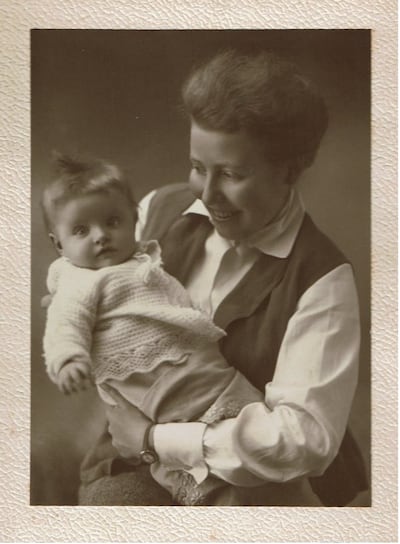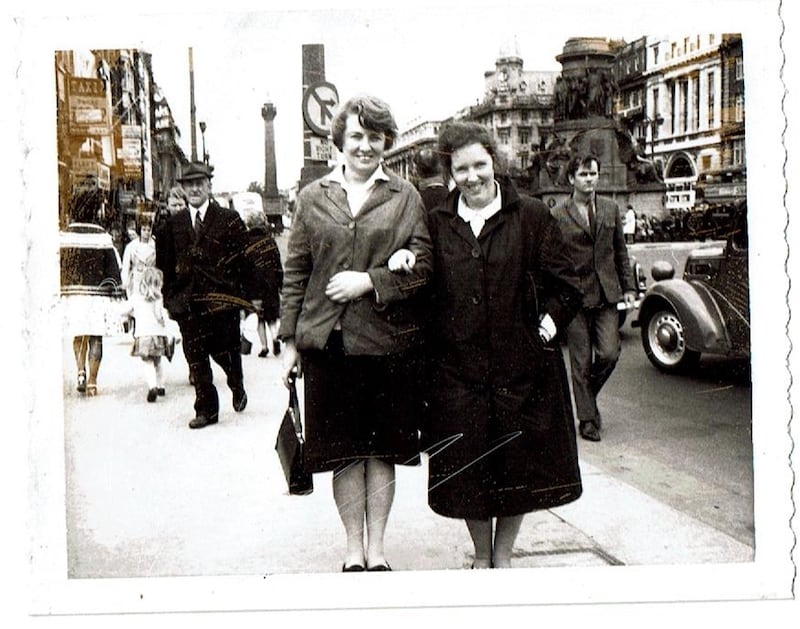In the autumn of 2016, I became obsessed with solving a historical mystery surrounding an Irish woman who lived in Moscow’s Hotel Lux in the 1920s. The Hotel Lux – the so-called “living quarters of the world revolution” – could justifiably be called modern history’s most interesting hotel. Like the nearby establishment the Hotel Metropole, the central location of Amor Towles’s bestselling A Gentleman in Moscow, the Hotel Lux was a pre-revolutionary premises seized by the Bolsheviks after the October Revolution of 1917. Its 350 rooms housed important figures of modern history, including a young Tito and Ho Chi Minh. Those who came to the Hotel Lux in the 1920s found a place of hope and revolutionary dreams. Guests who stayed there in the years of Stalin’s Great Terror experienced an atmosphere of paranoia as their fellow residents disappeared into the hands of the secret police. In this building, the distance between the emotional extremes of the communist experience was often the width of a corridor. At the start of my PhD on Irish women and international communism, I uncovered the story of the only Irish woman on the legendary guest list of the Hotel Lux. My expedition into her archival trail resulted in a years-long research odyssey.
When I first began my doctoral studies in September 2016, I was confident that I knew something about every revolutionary who would feature in the project. But a book written by a Jewish Ukrainian poet changed my mind. In 1936, the radical author Joseph Freeman published his autobiography An American Testament: A Narrative of Rebels and Romantics. Several paragraphs towards the end of the book made me feverishly curious. When he arrived in Moscow in 1926, Freeman was billeted in the Hotel Lux on Tverskaya Street. For Freeman, it was a time of high romance and fraught political debates. But it was also a time of learning and reflection guided by mentors, one of whom he remembered affectionately as a clever Irish woman, his boss on a translation team and the host of a literary salon that gathered in the Hotel Lux.

Even though I was something of an expert in the absurdly specific world of Irish communist women, I knew nothing about this woman, whose identity Freeman masked with a pseudonym. Other scholars, I later learned, described her as a “mystery woman”. Naturally, I took this as a challenge. Within weeks of starting my research, I found a likely candidate for this Irishwoman in Moscow: an Irish woman’s name assigned to correspondence held by a US university. The letters once belonged to an American woman who lived in the Hotel Lux in the 1920s. I emailed the Oregon archive that held the documents and waited. Soon, a large file landed in my inbox: hundreds of letters written by someone named May O’Callaghan. These letters confirmed my intuition, revealing to me a hitherto unknown Irish woman who lived at the crossroads of revolutionary history.
Armed with over a hundred pages of O’Callaghan’s own personal letters, I set about learning all I could about this enigmatic woman. Wherever I traced her, O’Callaghan’s voice erupted from the archives with vivacity and wit. The broad contours of a remarkable life soon became clear: born in 1881 in Wexford town, May was raised in a middle-class Catholic family in the village of Ballinesker. In 1914, May found herself in London as an activist campaigning for women’s suffrage alongside Sylvia Pankhurst. Here, in the suffrage fight, May met Nellie Cohen, a woman of Polish Jewish descent who became her lifelong friend.
READ MORE
Then, in 1924, O’Callaghan, this astonishingly talented yet obscure worker for radical causes, moved into Moscow’s Hotel Lux. By this point fluent in German, French and Russian, she rose quickly through the ranks of translators working within the Kremlin Palace and the Communist International. I uncovered an astounding fact: in the late 1920s, during the final Kremlin Palace debates between Stalin and Trotsky, one of the translation teams working in the former palace of the tsars was led by a middle-aged woman born in Wexford town.
O’Callaghan’s charisma and barbed humour attracted others into her orbit. Soon, a circle of young radicals began gathering in Room 5, May’s residence in the Lux. Among them was the handsome writer Joseph Freeman, who would remember O’Callaghan in his autobiography, and Emmy Leonhard, a German revolutionary who checked into the hotel in the early stages of a pregnancy. The father of the child was a married man, but O’Callaghan was never judgemental about such things. When Leonhard went into labour, O’Callaghan provided the fare for the cab that brought Leonhard to the Kremlin hospital and covered the medical fees. This favour created a lifelong tie between O’Callaghan, Leonhard and Leonhard’s daughter Elisa, born in Moscow in the early summer of 1925.
O’Callaghan’s time in Moscow was full of excitement. Through friends in Soviet publishing, she arranged the Russian translations of an author she admired: the Irish writer Liam O’Flaherty. The roguish O’Flaherty soon became a friend of O’Callaghan, first via rambunctious correspondence and later through meetings in Dublin during O’Callaghan’s rare visits home. O’Callaghan fatefully introduced Nellie Cohen, her old friend from East London suffrage days, to O’Flaherty. In 1928, there was a night in a London hotel room fuelled by whiskey. The result: Cohen became pregnant with O’Flaherty’s child. May, feeling partly responsible for the affair, left Moscow behind to help Cohen. The two women spent years together raising baby Joyce. O’Callaghan’s time in the Hotel Lux was thus bookended by these two arrivals: Elisa, born in 1925, and Joyce, born in 1929.

My discovery of these two daughters of the revolution made me determined to continue pursuing this archival trail. I began tracing living descendants to learn more. This was how I met Pippa Harris, the goddaughter of Joyce. Harris, it turned out, kept boxes of Cohen and her daughter Joyce’s material. She had never heard of O’Callaghan, but when I plucked a first-edition Liam O’Flaherty work from Harris’s bookshelf, I opened the cover to find a note; it was inscribed to O’Callaghan “with love & good wishes from Nellie & Joyce”. Conversations with Harris and documents she held gave me a greater sense of Joyce’s life. Joyce eventually met her father, O’Flaherty. However, he only acknowledged her existence years after she began writing letters seeking to make contact. Curiously, among Harris’s documents I also found letters to Joyce from Emmy Leonhard, the German revolutionary whom O’Callaghan had brought to the Kremlin hospital back in 1925. How did Joyce and Emmy come to know each other? I wondered. There was some more material in the attic, Harris suggested: boxes of love letters sent to Joyce.
Armed with my phone flashlight, I ascended into Pippa’s attic and came across the letters. There were multiple folders, each bulging with material. I opened one and scanned down towards the sign-off. I know exactly who wrote these, I realised with astonishment: Elisa Leonhard, the girl born to Emmy in the Kremlin hospital in 1925. At that moment, imagery and ideas rapidly surged to the forefront of my mind as I attempted to process the staggering set of historical contingencies required to make this discovery – and this relationship – explainable. At the heart of everything was O’Callaghan and her life in the Hotel Lux. Elisa and Joyce lived two radically different childhoods. Elisa, whose father was an organiser for the anti-Nazi underground, spent her childhood on Europe’s refugee routes. Joyce spent most of her childhood in the peaceful surroundings of north London. It turned out that on the other side of the second World War, Elisa and Joyce met through O’Callaghan. They eventually discovered they shared both their desires for a better world and their desires for one another.
In a 1970 letter to Joyce, Elisa noted the birth of a nephew, Pierre Ewald. I immediately felt compelled to find him. The fate of the other side of the love letters, Joyce’s letters to Elisa, was now an unresolved cliffhanger at the heart of my research. But Ewald proved an elusive target. Years passed between my initial discovery of his name and our first contact. Ewald, it turned out, was now known as Pedro Ewald and living on the Galician coast, far from Geneva where he was raised. In the summer of 2021, I visited his home. Together we made our way through his family archive.

A few days into my Galician adventure, Ewald came in to the kitchen with a black bin bag retrieved from his garden shed. He showed me the contents of the overflowing bag: hundreds of letters, many signed “love, Joyce”. Emotion swelled up within me as I realised both sides of the love letters had survived. Among Ewald’s material there was also a photograph of Elisa and Joyce together. Taken around 1963, it shows Elisa, who spent her first year in the Hotel Lux, arm in arm with Joyce, who was the result of friendships fostered in the same hotel. I know this location, I told Ewald: Dublin’s O’Connell bridge.
My journey into the life of a mysterious Irish woman who lived in a remarkable hotel culminated in an unexpected love story. I felt both a privilege and duty to ensure that this remarkable set of rebels and romantics could have a life outside of the archives, attic and garden shed where I found them. Beyond the familiar tales of ideologues arguing out doctrines lie intimate histories of ordinary people struggling to make sense of their own political and personal desires.
Maurice J Casey is a historian in the School of History, Anthropology, Philosophy and Politics in Queen’s University Belfast. His first book, Hotel Lux: An Intimate History of Communism’s Forgotten Radicals, is published by Footnote Press.
- Sign up for push alerts and have the best news, analysis and comment delivered directly to your phone
- Join The Irish Times on WhatsApp and stay up to date
- Listen to our Inside Politics podcast for the best political chat and analysis

















